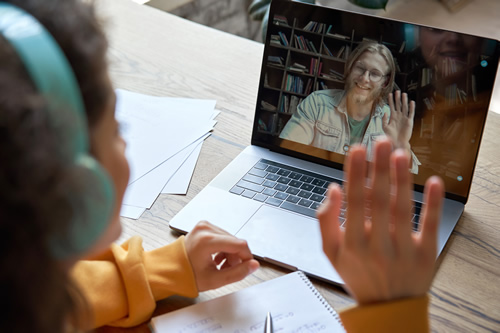With the onset of coronavirus (COVID-19), school districts, institutions of higher education, and educators are finding themselves in uncharted territory. COVID-19 hit hard and fast. And with that, so did the shift from in-school instruction to online learning, which brought to light very complicated issues and inequities.
The onset of remote learning has magnified the disparity between students who have access to computers and internet and those who do not. The digital divide in our communities, particularly among children from underrepresented and low socioeconomic communities, raises questions that need to be answered.
Related content: 4 possible COVID-19 learning realities
What technologically based tools make a difference? What context is critical for successful introduction and integration of such tools? What scale of implementation might be possible?
This past February, The American Association of Colleges for Teacher Education (AACTE) brought together representatives of stakeholder institutions and organizations to discuss these issues and how to effectively respond to the challenges teachers face in using technology to meet the needs of all students despite the inequities posed by the digital divide.
The challenge isn’t just whether educators and students have the hardware, software or broadband, but there is also the human element of how comfortable we are with technology in general and how well we’ve been instructed in facilitating online learning.
While there are many high-quality online learning environments, they often require a substantial amount of background knowledge and previous professional development in order to navigate effectively. We have excellent, highly-trained teachers who simply do not have experience teaching in a virtual environment. It can be a very difficult lift for in-class educators to retrofit their pedagogical skills to an online format.
There are school districts and institutions of higher education that have adapted well to online teaching and others that have not. Many AACTE member institutions have transitioned classes to an online platform while others have canceled all classes for the remaining semester to ensure the safety of their students, which has severely impacted clinical practice requirements and other criteria teacher candidates must complete for graduation. This is indeed an unprecedented time.
While the swift move to online learning creates many challenges, it also creates the opportunity to understand, learn, and develop a new virtual reality through education programs. In order to address these challenges as well as prepare student teachers before they enter into a real classroom, AACTE has partnered with Mursion to provide member institutions with access to a virtual reality platform that blends artificial intelligence and live human interaction.
The platform offers education students the opportunity to present lesson plans in front of a virtual class of avatar students who each have distinct personalities and present the candidate with various situations. Teacher candidates get practice in as close to a real environment as possible so they are more prepared when entering a real classroom, and can receive credit towards completing their clinical field experiences.
Virtual training technology does not only benefit future educators, but today’s educators who want to hone their pedagogical skills to an online format. Using technology to prepare our educators will lead to a better learning experience for students and allow teachers to be more confident in a remote classroom environment. Nearly 20 colleges of education have implemented Mursion, and have access to field-tested classroom simulations, which provide evidence-based results for improving skills essential to working with human development.
The AACTE and Mursion collaboration seeks to ensure teachers and leaders are being prepared to provide deeper online learning opportunities to all students. AACTE, in coalition with other educational partners and organizations, is working to improve the technology literacy of future educators and provide them with the skills and digital tools needed to become proficient at online instruction.
COVID-19 has presented many challenges to the field of education and in providing equity for all students. However, with these challenges comes the opportunity to examine and implement online programs and practices that improve outcomes for all learners. To start, we need to infuse technological literacy throughout our education programs and equip our education candidates with the skills and knowledge they need now and into the future.
AACTE members are committed to preparing high-quality teacher candidates through practical experiences in school-based classrooms interwoven with academic coursework to make future teachers profession ready for the 21st century learner, and are leading the way forward with innovative technology. Learn more about the AACTE and Mursion collaboration here.
- High school students say AI will change the workforce - April 18, 2024
- Motivating students using the Self-Determination Theory - April 17, 2024
- Michigan Virtual’s statewide workgroup releasing AI guidance for K-12 educators - April 17, 2024

